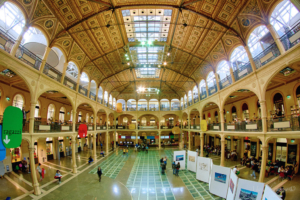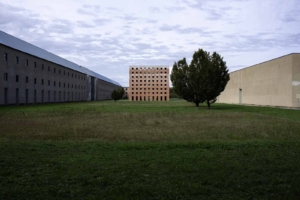Bologna’s Archiginnasio: from books to anatomical theatre
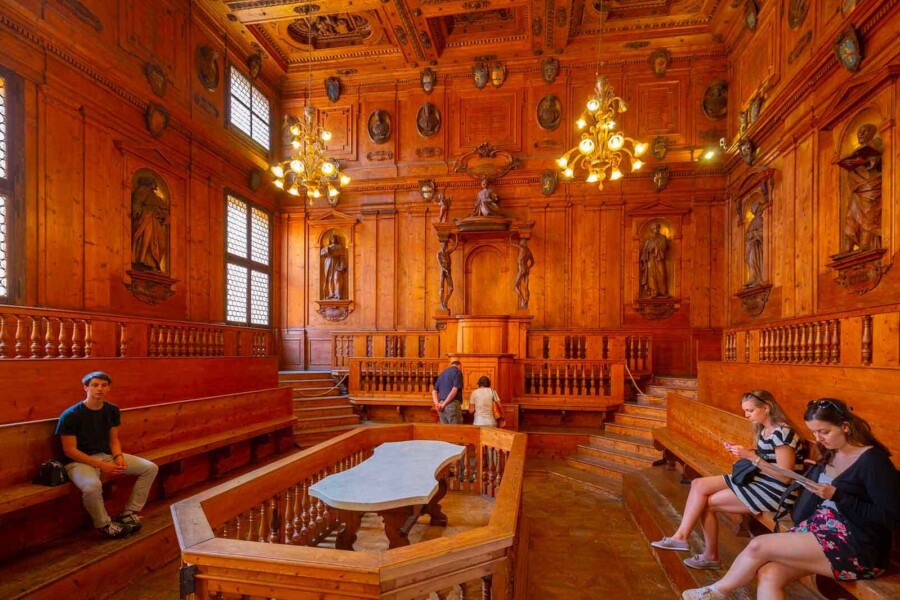
Visiting the Archiginnasio Library is like stepping back in time.
You’ll immerse yourself in the rich tapestry of Bologna’s academic and cultural heritage.
Whether you're a history buff, an architecture enthusiast, or just curious, the Archiginnasio with its Anatomical Theatre offers an unforgettable journey through centuries of knowledge and tradition.
What's Archiginnasio in Bologna?
The original headquarters of the University of Bologna was the Archiginnasio Palace, located at Piazza Galvani 1, right behind the Church of San Petronio.
This historic building housed the university and is home to the first anatomical theatre, where groundbreaking anatomy lessons took place.
But what are the top 3 oldest universities in the world?
- University of Bologna (Italy) - Founded in 1088, it is widely regarded as the oldest university in continuous operation, setting the foundation for modern higher education.
- University of Oxford (United Kingdom) - Established in 1096, Oxford is renowned for its academic excellence and has been a leading institution for centuries.
- University of Cambridge (United Kingdom) - Founded in 1209, Cambridge emerged as an academic powerhouse and remains one of the most prestigious universities globally.
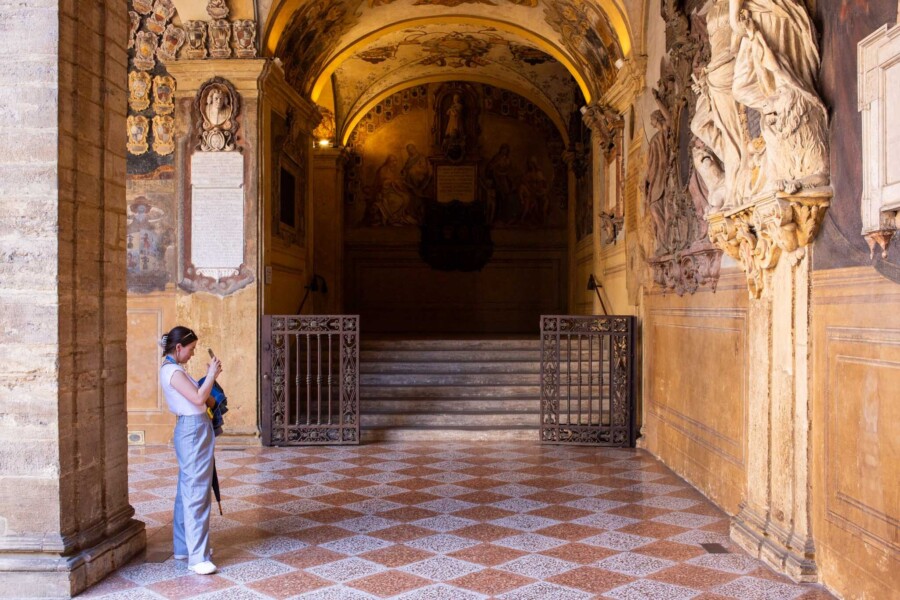
Visit Archiginnasio
Step into History: The Grand Entrance
When you arrive at the Archiginnasio from Piazza Galvani, the first thing you'll see is the impressive façade with its thirty arches and corresponding windows.
Look closely at the window decorations – you’ll spot sirens, braziers, masks, and fantastic birds.
Pope Pius IV commissioned Archiginnasio to unite the Studium Bolognese in one location and Antonio Morandi, known as "Terribilia", built it around 1562.
This building was part of a larger renovation of Piazza Maggiore, which included the Neptune Fountain and the expansion of the Ospedale della Morte.
As you walk through the portico and the grand entrance door, you’ll find yourself in a large square courtyard surrounded by a double loggia.
The arches on the first floor, once used by students during public ceremonies, now set the stage for modern-day conferences and concerts.
Walk under one of the best portici in Bologna, you’ll be amazed by the thousands of coats of arms and dedications that adorn the walls and vaults.
Students dedicate each of them to professors, priors, mayors, rectors and lecturers. Of various shapes and sizes, most are frescoed in gouache and oil, there are 7,000 of them in the entire building.
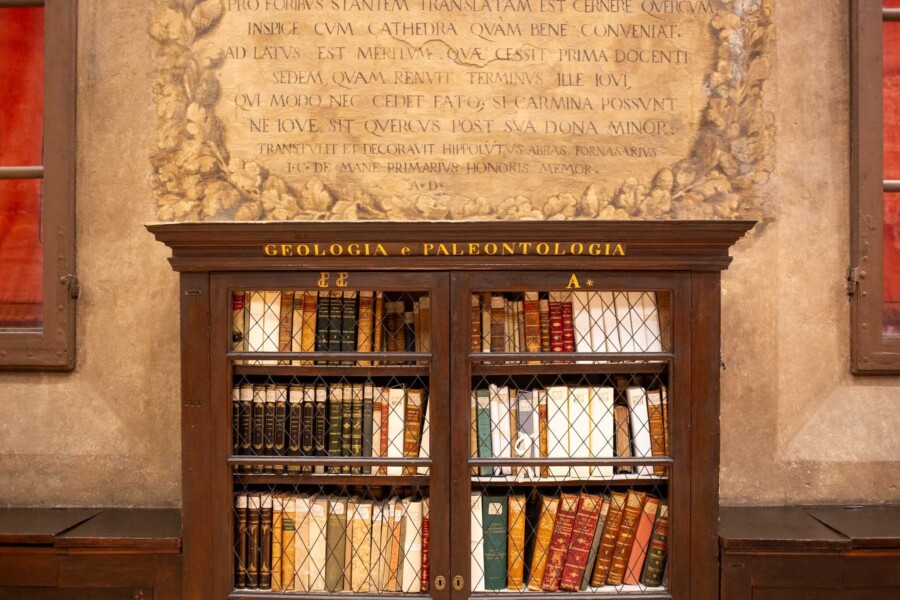
Books inside the Stabat Mater
The Anatomical Theatre
Climb one of the grand staircases to reach the upper loggia, a dazzling display of heraldic decorations.
Here, you can visit the splendid Anatomical Theatre, a masterpiece of inlaid woodwork with a white marble dissecting table at its center.
Bizarre wooden sculptures, including the famous "spellati," support a canopy above an allegorical statue of Anatomy. This room, painstakingly reconstructed after WWII bombings, offers a fascinating look into the history of medical education, with busts of great doctors from Hippocrates to Malpighi.
Next, step into the Stabat Mater hall, where Gioacchino Rossini’s opera was first performed.
This grand hall, originally for law professors (Legisti), showcases Bologna’s cultural heritage.
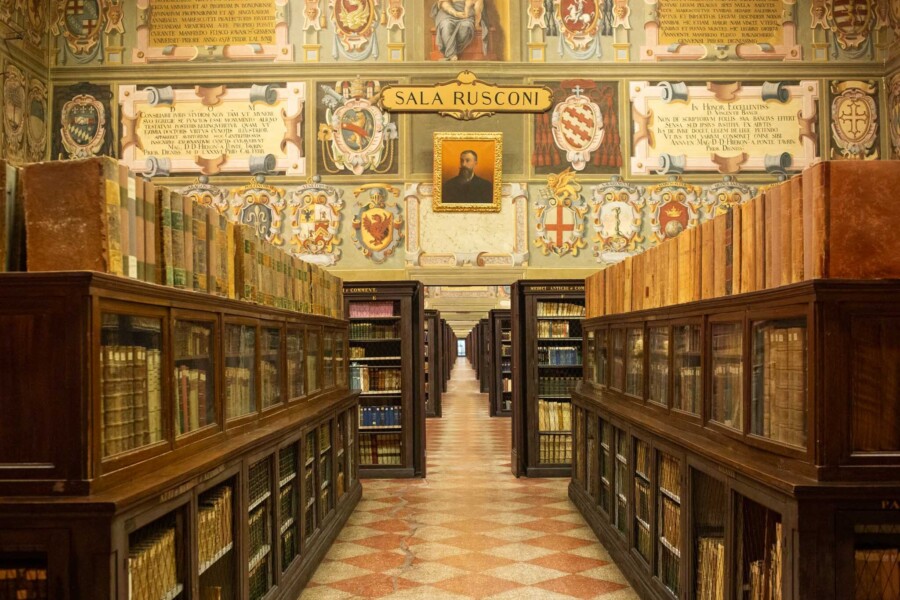
Archiginnasio library storage, not bad huh?
Dive into the Library: A Scholar’s Sanctuary
Cross the corridor to enter the library rooms, where you’ll need to leave a document and deposit any bags.
Inside, you’ll find one of the best libraries in Italy, with a treasure trove of ancient books, periodicals, manuscripts, and prints.
Established in the 19th century, the library is a haven for book lovers and scholars alike.
The reading room, once the great hall of the Artists, invites you to study in a serene environment, with large wooden tables and a peaceful silence broken only by the rustling of pages.
The Artists' Hall and the Legists' Hall are connected by 10 richly decorated rooms, now used for library storage, each one a reminder of the grandeur of the past.
As you wander through these halls, you’ll feel a deep connection to the generations of students and scholars who have passed through these doors, each contributing to the legacy of the Archiginnasio.
Beyond Archiginnasio
Archiginnasio is one of the best library and University sites in Bologna.
But not the only.
Take your time to explore the University museums, hidden libraries, and bookshops.
Walk around the streets full of students from around the globe and travel back in time around the portici.
